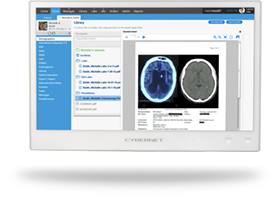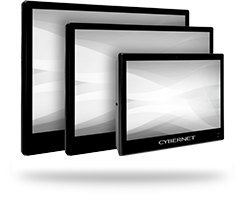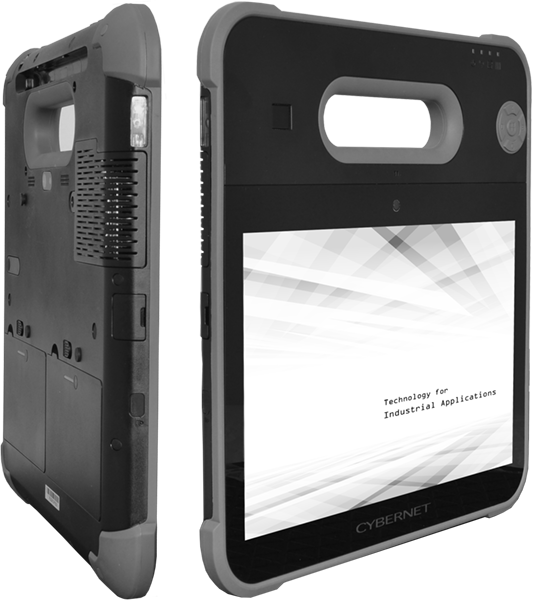Touch screen technology has revolutionized computers in both consumer and commercial settings. Today, the question of capacitive vs. resistive touch screens is one of the most important aspects to consider when purchasing a new device. Understanding their strengths, weaknesses, and preferred roles is critical to using them effectively.
Capacitive vs. Resistive Touch Screens: How Do They Work?
Capacitive and resistive touch screens work on similar principles: they detect inputs made on a device’s monitor or screen by human hands, as opposed to relying on peripheral devices like mice and keyboards. This saves space in a work environment and provides an intuitive user interface for customers to use. However, the different ways they detect inputs drastically shape their designs and use cases.
Capacitive Touch Screens
A capacitive touch screen works by sensing the electrical current in a human’s body. Underneath the screen’s glass is an insulator and conductive layer that senses changes in electrical charge. When the user touches the screen, that charge is drawn to the point of contact, which the system can interpret as input. Capacitive touch screens can even support multitouch operations, which gives end-users more options for controlling the computer and any software running on it. Capacitive touch screens are the standard for consumer smartphones as well as devices used in various business sectors, such as medical computer tablets.
Resistive Touch Screens
In a resistive touch screen design, two thin layers of plastic are coated with an electrically conductive material with a small gap between them. When the user presses down on the screen, the two layers make contact, creating a change in voltage that the computer registers as an input. Resistive touch screens cannot register multiple inputs, and are generally less precise than capacitive screens.
The Benefits and Drawbacks of Capacitive vs. Resistive Touch Screens
While capacitive and resistive touch screens fulfill the same role of combining a user interface with a display, their differing designs give them unique strengths and weaknesses.
Capacitive Touch Screens
Capacitive touch screens enjoy a considerable edge when it comes to flexibility and accuracy. The fact that they support multitouch gestures alone gives the owner more options for how they use the computer. For example, a designer could use multitouch gestures to rotate a 3D render of a product prototype, examining it from multiple angles without ever touching a mouse or keyboard. The glass surface that capacitive screens use is also easier to see through and less prone to scratching than a plastic screen.
However, that glass screen is also more prone to cracking if dropped or mishandled. While chemically treating the glass can harden its surface and protect it from damage, it cannot prevent false inputs caused by water or dirt on the screen. The fact that capacitive screens rely on electrical currents means that non-conductive materials, such as thick fabric gloves, will not work with them.
Resistive Touch Screens
The most significant advantage of resistive touch screens is that they are cheap and reliable. This makes them ideal for any work environment where attrition is expected or where performance is not a top priority. A point-of-sale system, such as the automated checkout lane in a grocery store, may not require blazing-fast processing speeds or high-resolution graphics; it simply needs an interface that is easy to use, reliable, and inexpensive to replace. Additionally, because resistive screens rely on pressure to detect inputs, they can work with styluses or while wearing heavy gloves.
However, resistive screens have their share of drawbacks as well. Resistive screens are not as precise as capacitive screens when it comes to reading inputs, and their reliance on pressure means they can sometimes miss inputs as well. Additionally, if you do need a more flexible display solution capable of a wider variety of inputs, a resistive screen cannot meet this requirement.
Applications for Capacitive and Resistive Touch Screens
Almost every sector imaginable can find a use for both types of touch screen controls. Choosing between capacitive vs. resistive often comes down to the demands of their work environment. Both options see use in a wide variety of businesses and environments, including:
Industry
Touch screens are a common fixture for technology in the industrial sector, whether as a human-machine interface or on a discrete computer. Capacitive touch screens are commonly used on industrial panel PCs, where their accuracy and clarity are critical for displaying and interacting with information. They are also used on rugged tablets, which obviously require a flexible and accurate interface. Resistive touch screens are mostly used for built-in control screens on machines, especially those that are more liable to be damaged during use.
Healthcare
Healthcare frequently utilizes touchscreen controls for two primary reasons. First, the space on a medical cart is limited, and removing a mouse and keyboard leaves more space for critical tools and supplies. Secondly, removing the mouse and keyboard from the equation reduces the number of objects that need to be cleaned and disinfected by staff, thereby lowering their workload. Most medical computers and tablets rely on capacitive screens, as healthcare providers need the superior clarity they offer. Resistive screens are typically seen in less demanding roles, such as patient check-in computers.
Enterprise
The increasingly digital workspace of modern businesses demands flexible and intuitive solutions. For most companies, this takes the form of powerful and flexible business computers with capacitive touch screens, providing workers with the full suite of tools they require. Resistive screens are primarily used in low-demand, customer-facing roles, such as the aforementioned point-of-sale system example. However, even this paradigm is being disrupted as more companies embrace business tablets with capacitive screens as POS solutions, as they are more flexible and can be used for other tasks, such as inventory management or time-keeping.
Reliable Touch Screen Computers from Cybernet Manufacturing
Thanks to their ease of use and installation, computers with touch screen controls are the first choice for countless roles across multiple sectors. Whether you choose between a capacitive vs. a resistive screen comes down to the demands of the role itself.
If you need help choosing the right computer, contact Cybernet Manufacturing. We’d be happy to further explain the strengths and weaknesses of the different options and recommend one of our own solutions. As an original equipment manufacturer, we can even customize our products to better fit your needs, such as integrating anti-glare filters or privacy screens directly into the display itself.


